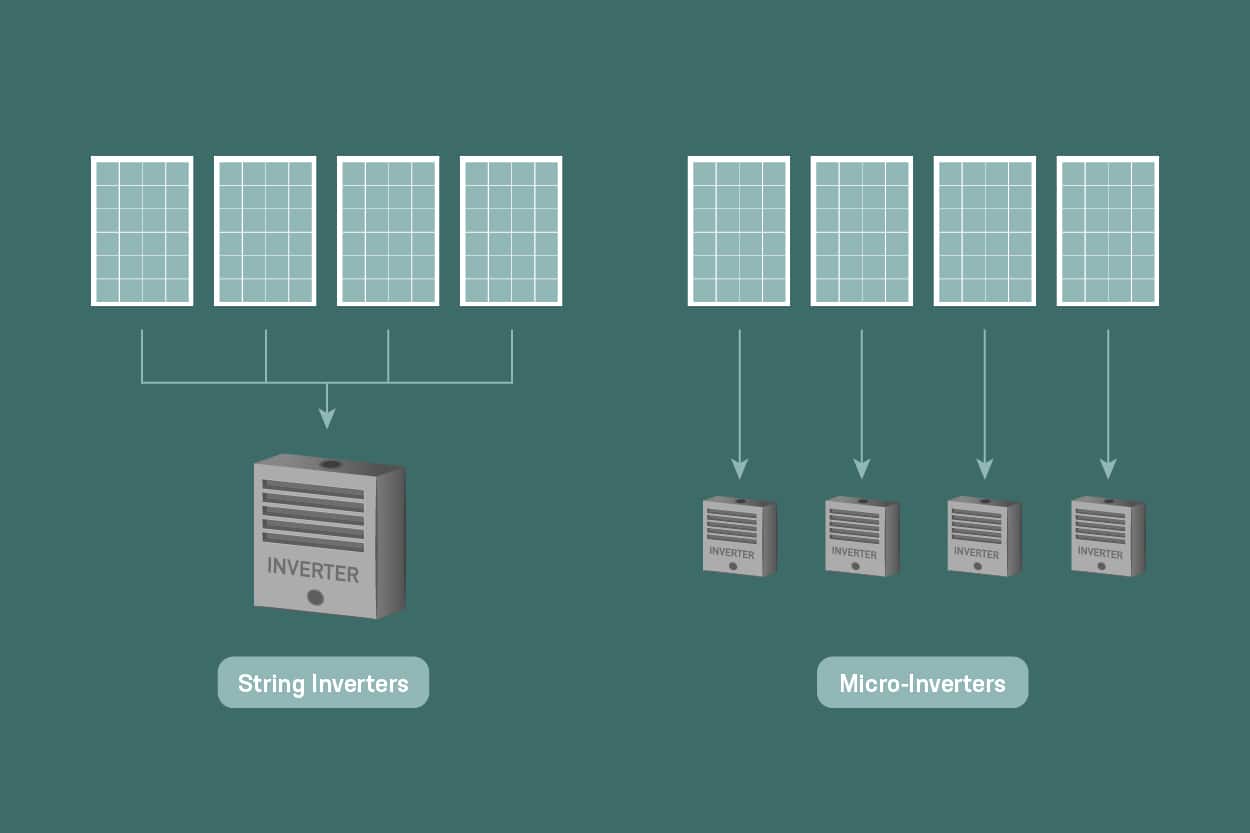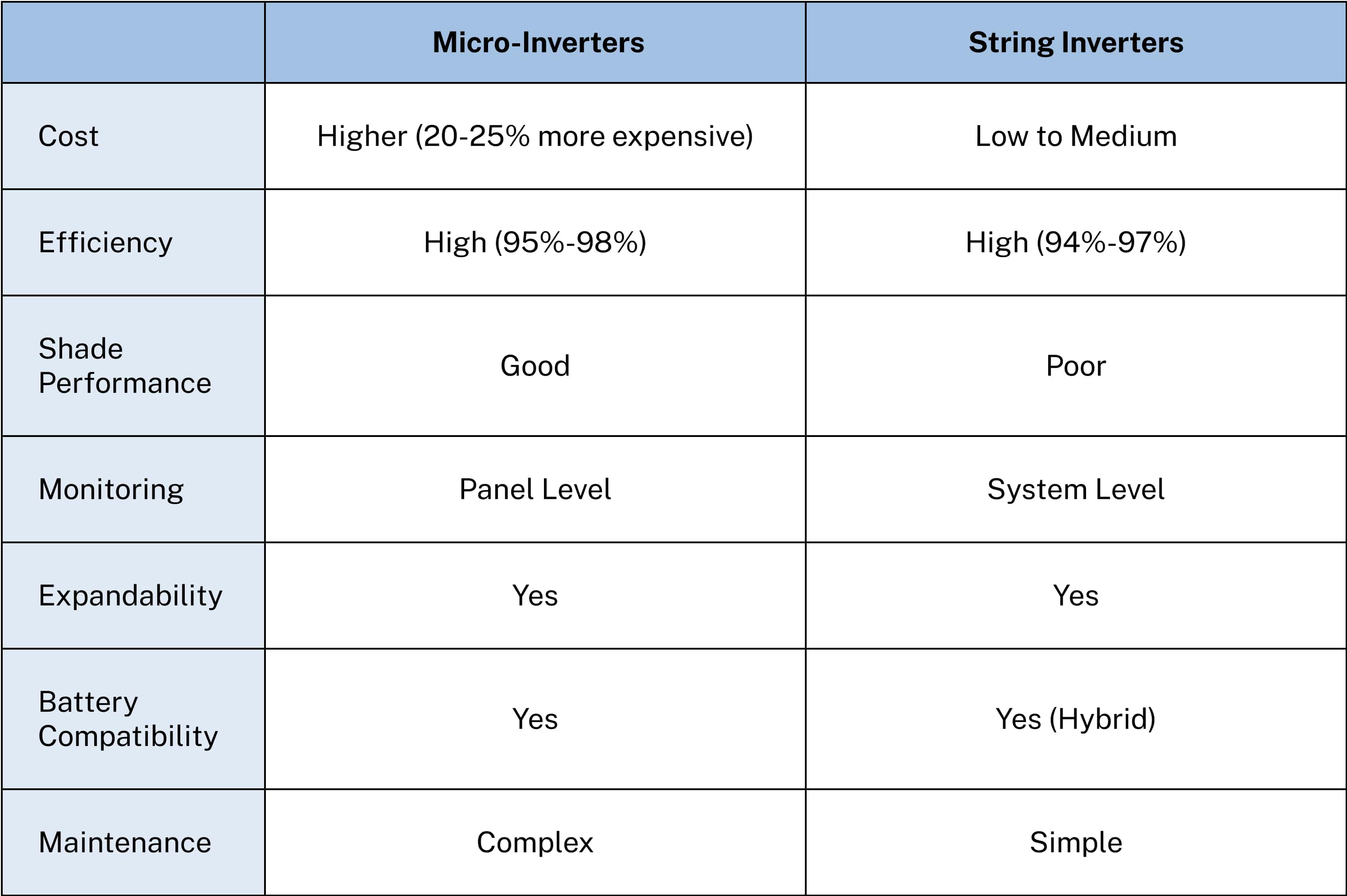Comparing String Inverters and Micro-Inverters
Delve into an exploration of cost, efficiency, performance, and other distinctions.
When venturing into the world of solar energy, the choice of inverters becomes a pivotal decision, influencing the efficiency, cost, and overall performance of your solar panel system. Both string inverters and micro-inverters present distinct advantages and considerations. Let's delve into a comprehensive comparison to help you make an informed solar choice.

1. Cost
Micro-inverters come at a premium, costing approximately 20-25% more than string inverters. While string inverters sit comfortably in the low to medium range, micro-inverters demand a higher upfront investment.
2. Efficiency
Both options showcase commendable efficiency levels. Micro-inverters operate at a high-efficiency range of 95%-98%, slightly edging out string inverters that typically perform at 94%-97%. The difference in efficiency, though marginal, can impact overall energy production.
3. Shade Performance
Micro-inverters shine in shaded environments, delivering good performance even when panels are partially obstructed. On the contrary, string inverters falter in the presence of shading issues, leading to a drop in overall system efficiency.
4. Monitoring
Micro-inverters offer an edge in monitoring capabilities with panel-level insights. This allows for precise tracking of each panel's performance. String inverters, while efficient, provide monitoring at the system level, offering a holistic view rather than individual panel scrutiny.
5. Expandability
Both micro-inverters and string inverters are expandable, accommodating the addition of more solar panels to your system. This flexibility caters to future energy needs or expansions, ensuring scalability in your solar setup.
6. Battery Compatibility
Both options support battery compatibility, enabling users to integrate energy storage solutions into their solar systems. While micro-inverters seamlessly pair with batteries, string inverters can be used in hybrid setups for enhanced energy autonomy.
7. Maintenance
Maintenance considerations diverge between the two. Micro-inverters can be more complex to troubleshoot and repair due to their distributed nature. In contrast, the centralised design of string inverters simplifies maintenance, often requiring less intricate attention.
To simplify your decision-making process, here's a quick comparison table highlighting the key differences between String Inverters and Micro-Inverters:

Remember, the best choice depends on your specific needs and preferences. Whether you're inclined towards micro-inverters or string inverters, buySolar has you covered! Reach out to us, and our expert team will guide you seamlessly through your solar journey, ensuring a hassle-free transition to clean, sustainable energy. Embrace solar with confidence!
